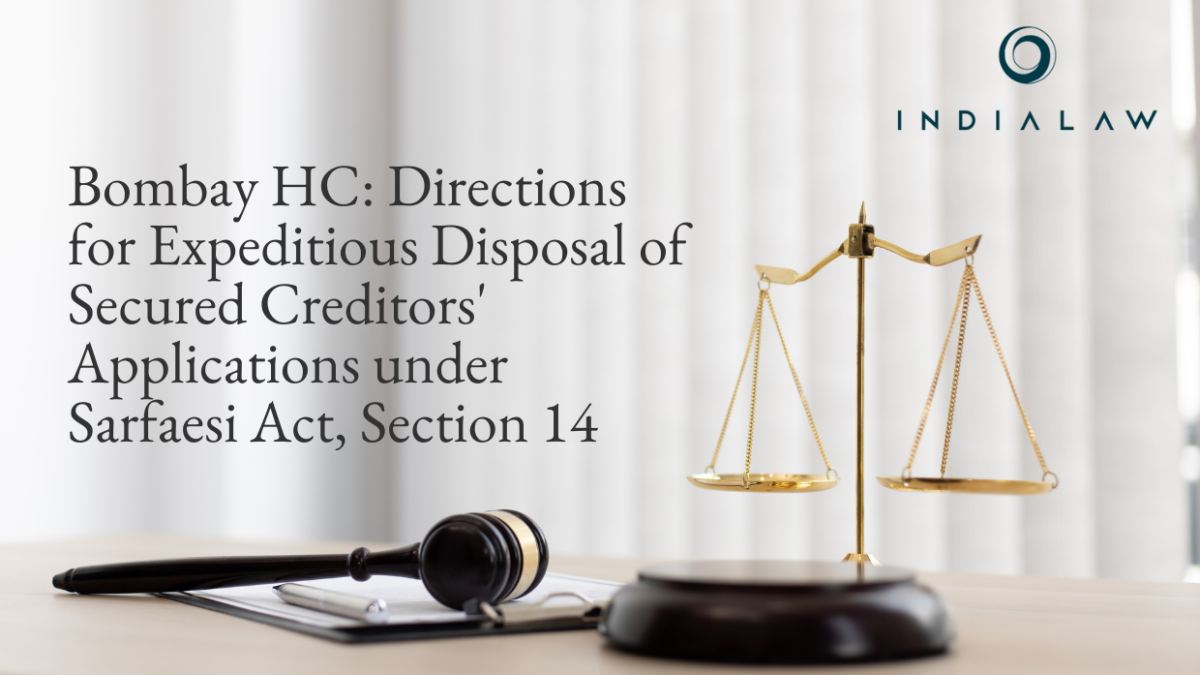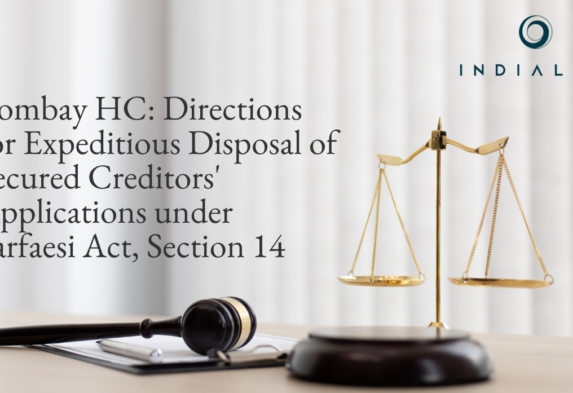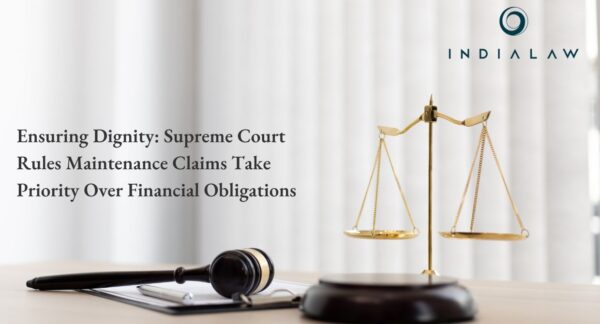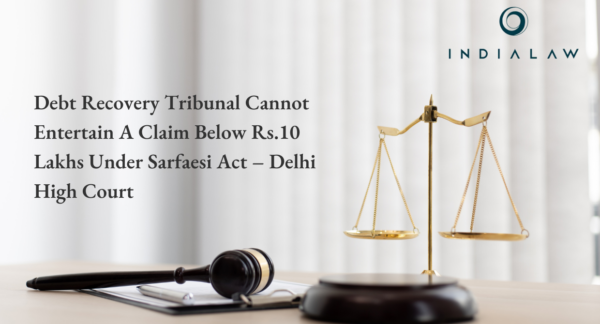Bombay High Court | Directions Issued For Expeditious Disposal Of Applications Filed By Secured Creditors Under Section 14 Of Sarfaesi Act


The Hon’ble Division Bench of Bombay High Court comprising of Justice Nitin Jamdar and Justice Abhay Ahuja in L & T Finance Limited vs. State of Maharashtra vide order dated 17th April, 2023[i]issued a set of directives to expedite the process of disposal of the applications filed before the Chief Metropolitan Magistrates and District Magistrates under Section 14 of the and Reconstruction of Financial Assets and Enforcement of Security Interest Act, 2002 (hereinafter referred to as the SARFAESI Act).
Facts Of The Case:
Several Writ Petitions were filed by L&T Finance, TJSB Sahakari Bank and the National Co-operative Bank seeking timely disposal of the Section 14 applications filed before the Chief Metropolitan Magistrates and District Magistrates under Section 14 of the SARFAESI Act.
The primary issue raised by the Petitioners was that, although the powers of the Chief Metropolitan Magistrate and District Magistrate are ministerial in nature and intended to facilitate the secured creditors to take possession of their assets promptly, the applications filed under Section 14 of the SARFAESI Act are kept pending for a long period of time.
Observations Of The Court:
The Court observed that the powers of the Chief Judicial Magistrate and the District Magistrate under Section 14 of the SARFAESI Act are merely administrative and do not involve pronouncing any judgement. It is the duty of the Chief Judicial Magistrate/ District Magistrate to assist the secured creditor in obtaining possession of the secured assets.
The Bench in reference to the judgment passed by the Supreme Court in the case of NKGSB Coop. Bank Ltd. v. Subir Chakravaraty [ii] held that the steps taken by the CMM/DM in taking possession of the secured assets and documents is a ministerial act.
The Court also referred to the case of RD Jain & Co vs Capital First Ltd,[iii]wherein the Supreme Court reiterated that the steps taken by the CMM/DM under Section 14 of SARFAESI Act is a ministerial step and no element of quasi-judicial function or application of mind is required. The Magistrate must adjudicate and determine the correctness of the information provided in the application and nothing more.
The Bench summarized the guidelines issued by the State Government via Circular dated 10th April, 2023, which talked about several measures, including implementation of an online platform wherein all information and records would be uploaded so that the statistics are readily available. The guidelines also stated that all pending applications as of 31st March, 2023 should be disposed of by 30th April, 2023.
The State Government’s guidelines garnered appreciation from the Hon’ble Court, as it will not only assist to promote expeditious disposal of applications but also decrease the number of petitions filed by the secured creditors.
In view of the Circular by the State Government and the statement of High Court administration, the Court issued the following directions:
- The District Magistrate/ Collector in Maharashtra should dispose of the Section 14 applications within 30 days from the date of filing.
- Every order passed by the District Collector under Section 14 of SARFAESI Act should be implemented and executed not later than 4 weeks of the passing of the order.
- If the officers are preoccupied with other urgent public duties, an advocate may be appointed to implement the order within the legal parameters. If permitted by law, the same option can also be considered by the Judicial Magistrate.
- The District Magistrate/ Collector shall submit a report to the Divisional Commissioner during the first week of each month, detailing the Applications which have not been disposed of within thirty days, along with reasons for the delay.
- If an application is not disposed of within 60 days of passing, or the order is not implemented within 60 days of passing, the concerned party has the right to make a representation to the Divisional Commissioner. Upon receipt of the said representation, the Divisional Commissioner shall review the same within 15 days and if there are no justifiable reasons for the delay, shall pass appropriate directions to ensure that the Application is disposed of or the order is implemented within 15 days of the direction.
- It is required that every District Magistrate/ Collector shall maintain proper details and records of the filing and disposal of the applications, as well as execution of the orders. These records must be submitted to the Divisional Commissioner in a specified format on or before the 7th day of the following month.
- The State Government is required to take steps for implementing an e-system for providing information on an online platform within a time frame of sixteen weeks, from the date of this judgment.
- The High Court Administration to consider issuing directions to the CMM to undertake a special drive for the disposal of pending Applications.
- The High Court Administration to consider setting up a separate category within the Case Information System software for such applications, so that these cases can be identified for the special drive.
The significance of expeditious disposal of the applications under Section 14 of the SARFAESI Act was emphasized by the Hon’ble Court, as the accumulation of many applications impedes the recovery of bad loans, which has a major impact on the financial health of the nation.
Accordingly, the Writ Petitions were disposed of.
[i] A.S. Writ Petition No. 15285 of 2022
[ii](2022) 10 SCC 286
[iii](2023) 1 SCC 675




